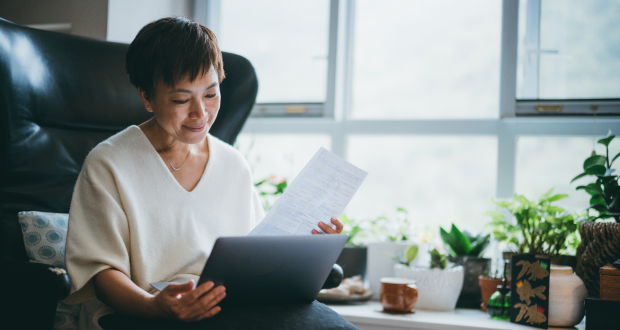Australian women are set to be thousands of dollars better off by the time they retire, with the government promising superannuation on paid parental leave in a landmark win for gender equality.
After long citing budget restraints, the government will move to help close the gender superannuation gap, announcing parents with babies born or adopted from July 1, 2025 who receive the minimum-wage support scheme will receive an additional 12 per cent as payment into their super funds.
According to Industry Super Funds, women retire with 30 per cent – or $67,000 on average – less than men.
Paying superannuation on paid parental leave was a key recommendation of the Women’s Economic Equality Taskforce (WEET) and follows the government’s expansion of the scheme, which can be shared by both parents, to a full six months by 2026.
Women’s Minister Katy Gallagher will release Australia’s first national strategy to achieve gender equality on Thursday and, in a speech to the National Press Club, will confirm Labor will adopt one of the hardest-fought gains for the union and women’s movement.
In unveiling the blueprint, she will say that gender equality cannot be achieved unless care is better valued and celebrated and without addressing the way the care economy functions.
The ABS found in the 2019-20 financial year the median superannuation balance of women over 65 was $168,000 compared with $208,200 for men.
Details of the cost won’t be released until budget night, but Senator Gallagher on Thursday will say the major policy reform is an “important investment to help close the super gap”.
“The Albanese Labor government is serious about making sure women are supported when balancing caring and working responsibilities,” Senator Gallagher will say.
“The data is clear – that when women take time out of the workforce to raise children, it impacts their retirement incomes, with women retiring, on average, with about 25 per cent less super than men.
“Paying super on government parental leave is an important investment.”
Treasurer Jim Chalmers said the change meant, over the long term, a “more dignified and secure retirement for more Australian women”.
On average, about 180,000 families receive government-paid parental leave a year.
Social Services Minister Amanda Rishworth said the changes would bolster women’s workforce participation.
“It helps normalise taking time off work for caring responsibilities and reinforces paid parental leave is not a welfare payment – it is a workplace entitlement just like annual and sick leave,” she said.
“These reforms cement paid parental leave as a Labor legacy.”
But the Greens, who have long called for the inclusion of superannuation into paid parental leave, have accused Labor of dragging their feet on genuine reform.
“We welcome this announcement, but why make women wait until 2025, when Labor has a paid parental leave bill before the Senate right now,” the party’s spokesperson on women Larissa Waters said.
“Parental leave is the only leave entitlement paid without superannuation. Making people wait until after the next election to receive it is an outrage.”
Modelling by health and community-care sector superannuation fund HESTA shows that if the government had paid super parental leave since its introduction in 2011, mothers who had used the policy would have a combined $3.3 billion more in their super accounts right now.
The fund’s chief Debby Blakey said while the announcement was a significant step, women on lower-incomes were still paying more tax on their super contributions than their wages.
“More than 80 per cent of our one million-plus members are women, many working in typically lower-paid industries such as aged care or early childhood education,” she said.
The Super Members Council of Australia (SMC) said it was “stride forward” for gender equity and estimated that under the changes a mother of two’s retirement savings would be increased by about $14,500.
It pointed to new analysis showing the gender super gap in Australia had narrowed for all age groups except for women in their 30s, who are retiring with about $12,000 less than men due to super not being paid on parental leave.
“This watershed reform will make a powerful difference to the lives and retirement incomes of generations of Australian women in the decades ahead – and narrow the gender gap at retirement,” the SMC's chief Misha Schubert said.
Do you have an idea for a story?Email [email protected]
 Aged Care Insite Australia's number one aged care news source
Aged Care Insite Australia's number one aged care news source

